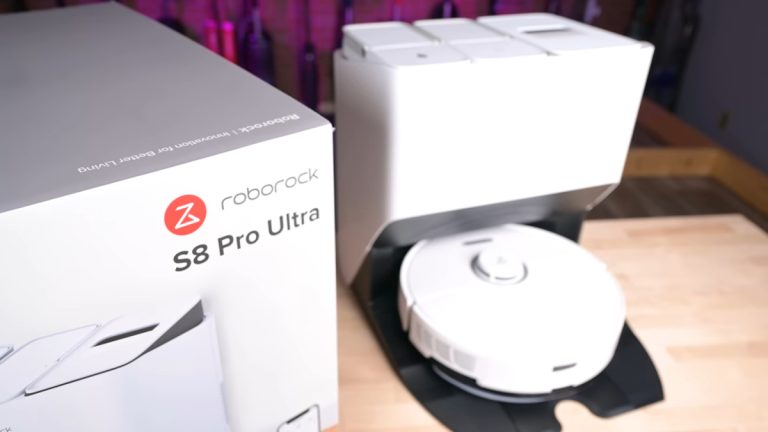We may earn commission from links on this page.
Who will be at the forefront of the iPhone or the latest wearable technology? That job generally goes to the enthusiastic early adopters who try the technology before anyone else. Sometimes it pays off: There's a pricey pair of Google Glass in a box somewhere in a drawer.
But being the first to buy new technology also means you may not realize that that technology will upgrade dramatically over time. You might be watching your friends buy technology they've had for ages and not realize new features and benefits are emerging, which can lead to missed opportunities.
If you stick with Sonos Play speakers, you'll miss out on Sonos Era and Arcs
I was stubborn and tried to avoid paying the hefty price tag for a Sonos Playbar and speakers. I was sure there was another solution for Wi-Fi connected speakers, but Sonos was the only option nearly a decade ago, so I finally agreed. I'm happy with my system, but recently upgraded from a Playbar and two Play 3 speakers to an Arc and two Era 300 speakers for my TV surround. The difference is immediately noticeable. Aside from the fact that all the new speakers are voice responsive, this is a major upgrade. The bass on the Era 300 gives it a very full sound. This may be because there's more hardware housed inside, but it does improve spatial audio.
I've always thought the Playbar sounded great, especially with my TV speakers, but I was amazed for a few days at how dialogue sounded much clearer on the Arc soundbar. This could be because the Arc supports Dolby Atmos and eArc. Even before I set up the Era as rear surrounds, the curved design of the Arc gives it an almost surround-like experience on its own. Switching surround to music gives you a clearer sound, even without a subwoofer. (I listened to The Mountain Goats ad nauseam for three days and they sounded amazing with this setup.) The upgrade also gives you Trueplay, a tuning application that was not available on Android before.
While the Era and Arc are certainly pricey, it's hard to overstate how much better TV dialogue, action, and music sound. Sonos isn't the only Wi-Fi speaker around anymore (Samsung has one in its lineup too), but it's hard to imagine anything better than what the Era/Arc surround combo delivers.
Three new Sonos speakers to consider:
It might be time to upgrade your doorbell
Over the past few months, I've been testing doorbells from Aqara, Google Nest, Blink, and Wyze, and one thing is for sure: Doorbells, overall, have improved a lot over the past decade. The difference in resolution alone makes it worth the upgrade. If, like me, you've ever thought that the video quality of your camera isn't much use if your home or car is broken into, the latest high-resolution options might change your mind. Newer cameras, overall, have much better night vision, and generally don't come in versions below 1080p, and they also support much higher resolutions, especially at night. In Eufy's case, it comes with two lenses for its ability to capture real detail.
Video doorbells have also gotten pretty cheap, with models starting at under $50. Of course, there are still expensive doorbells out there. For example, Ring has a new product that I haven't tried yet. These lower-cost doorbells don't have the same design details as Ring, but they're still functional and, in some cases, don't have subscription fees, which is a big plus. Plus, the new cameras may have AI features like package detection and, in some limited cases, face detection.
High Definition Video Doorbell:
Robot vacuums were cool, but these robot vacuums are even cooler
I've tried five floor robots over the past few months, and each one beat the Roomba to the punch, so I was ready to part with what I jokingly named my autonomous child. I thought the Roomba was fun. I couldn't figure out how it would navigate across the floor, and I was annoyed by how often I had to untangle things from the brushes or replace them. It would often get stuck under the couch, so I'd leave it for days before I felt like doing something about it.
Its replacement is a line of robots that vacuum and mop, but not in the Swiffer-like way that Roomba's buddy Braava does. The new floor robot doesn't spray dirty water on the floor; it constantly cleans the mop pad and stores the dirty water until it's ready to dump it in the dock. The floor robot empties the dust bin, so you rarely have to deal with it, but it refills the mop with clean water and dumps the dirty water in a separate station. All of this only needs to be replaced every week or so. The station then scrubs and dries the mop pad.
The improvements don't end there. Floors are cleaner, and the new machines get closer to walls as they clean. The new machines can navigate around objects better, so if you leave a dog toy (or a dog) in your living room, they won't be put off at all. Few machines use bump-and-go guidance anymore, and all use Lidar to map an entire room in seconds. Newer machines have a joystick function that can get the robot out of a tight spot. Some machines even have onboard video, so you can see where your floor robot is cleaning.
Most importantly, the robot doesn't require much maintenance – it's generally less likely to get lost or have things stuck inside it. While I strongly felt that the original Roomba wasn't worth the hassle, the new floor robot definitely lightens my workload around the house.
Two floorbots that impressed me:

